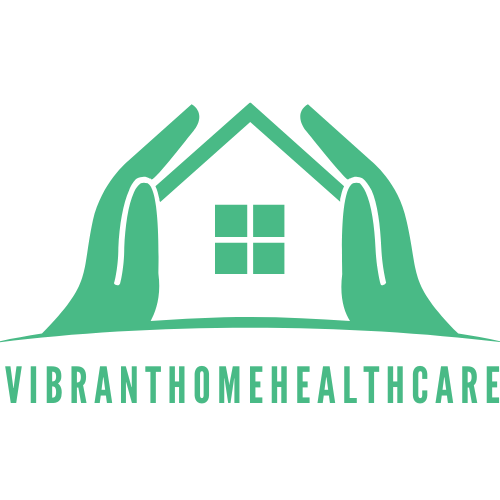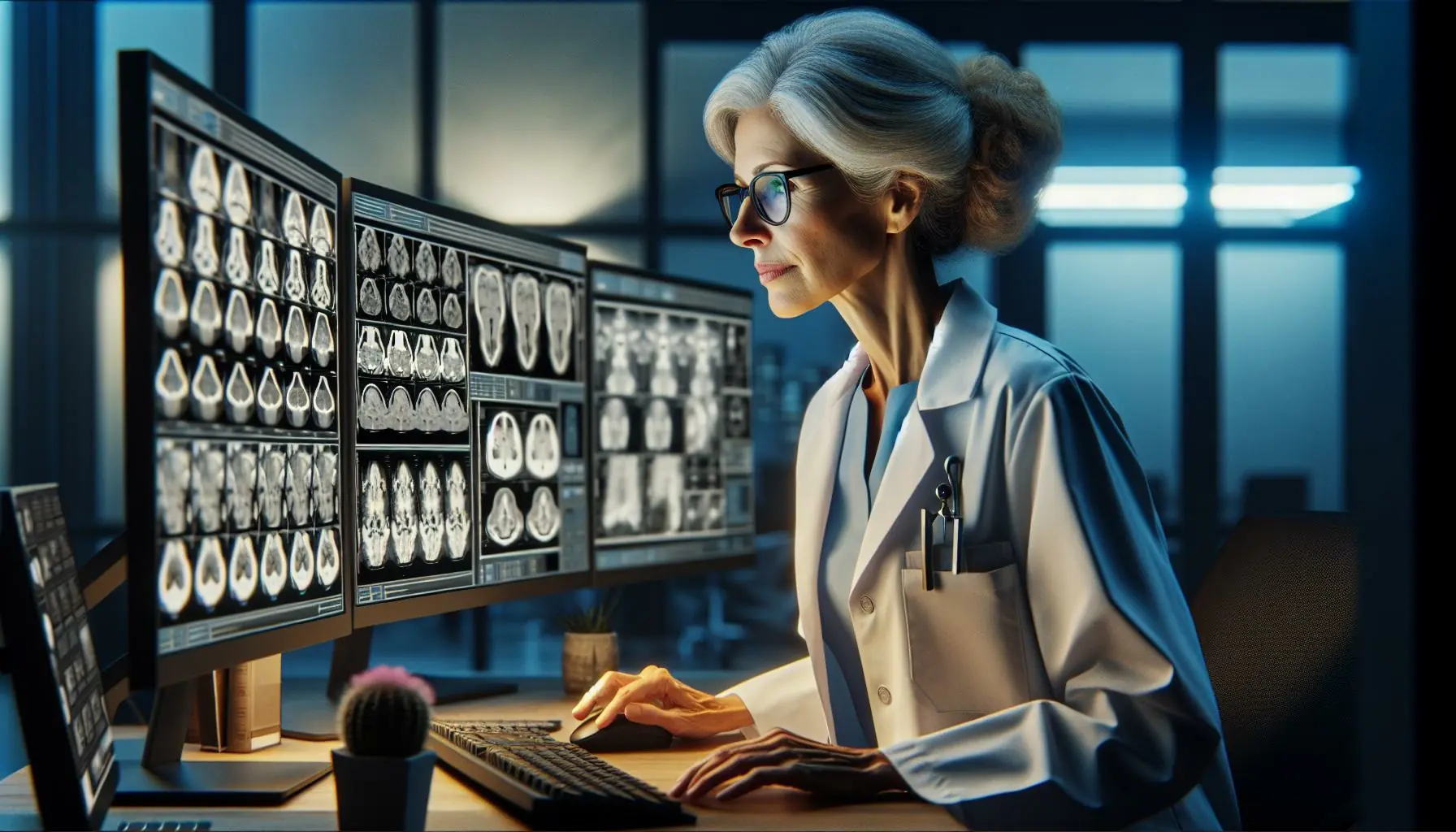As a practicing radiologist for over a decade, I’ve witnessed firsthand the unique challenges and opportunities that come with balancing a demanding medical career and personal life. The field of radiology offers distinctive advantages for work-life balance compared to many other medical specialties.
I’ve discovered that while radiologists often work long hours interpreting medical images and consulting with colleagues, the profession allows for more scheduling flexibility and remote work options than most medical fields. With the rise of teleradiology and advanced imaging technologies, many of us can now choose when and where we work. It’s a career path that’s evolving rapidly, making it an increasingly attractive choice for doctors seeking better control over their professional and personal time.
Table of Contents
ToggleKey Takeaways
- Radiologists enjoy more scheduling flexibility and remote work options compared to other medical specialties, though they often work long hours interpreting 80-100 diagnostic imaging studies daily
- The profession faces unique work-life challenges, including high case volumes, technology-related stress from 8-10 hours of screen time, and frequent on-call responsibilities requiring emergency availability
- Setting clear boundaries through protected time blocks, structured schedules, and dedicated communication protocols is essential for maintaining work-life balance
- Physical and mental wellness strategies, like regular movement breaks, ergonomic workstations, and mindfulness practices, are crucial for sustaining peak performance
- Practice environment significantly impacts work-life balance – private practice offers more autonomy and higher compensation, while hospital employment provides more structured hours and comprehensive benefits
Understanding the Demands of a Radiologist’s Career
A radiologist’s career involves complex responsibilities requiring precision focus high-level decision-making skills. I’ve observed how the demands of this specialty create unique challenges in establishing work-life boundaries.
Daily Work Responsibilities
My typical workday consists of interpreting 80-100 diagnostic imaging studies including X-rays MRIs CT scans ultrasounds. I spend 8-10 hours analyzing medical images submitting detailed reports conducting image-guided procedures collaborating with referring physicians. Key daily tasks include:
- Reading diagnostic images from multiple hospital departments
- Dictating comprehensive reports within 24-hour turnaround times
- Performing interventional procedures like biopsies needle aspirations
- Consulting with clinical teams during multidisciplinary meetings
- Managing contrast reactions emergency situations
- Reviewing prior imaging studies for comparison analysis
On-Call Requirements
The on-call schedule significantly impacts work-life integration with varying intensity based on facility type location. My experience includes:
| On-Call Type | Frequency | Average Cases |
|---|---|---|
| Night Call | 1-2x/week | 30-40 cases |
| Weekend Call | 1-2x/month | 60-80 cases |
| Holiday Call | 3-4x/year | 40-50 cases |
- Responding to emergency department imaging requests
- Interpreting urgent inpatient studies
- Supervising emergent contrast procedures
- Providing immediate consultation for critical findings
- Managing technical equipment issues after hours
- Coordinating with overnight imaging technologists
Common Work-Life Balance Challenges

Radiologists face several distinct challenges when managing their professional and personal lives. These challenges often stem from the intense demands of diagnostic imaging interpretation combined with rapid technological advancement.
Long Hours and High Case Volumes
I’ve observed that managing high case volumes creates significant time pressure in radiology practice. A typical workday involves interpreting 80-100 imaging studies with each case requiring 3-15 minutes of focused analysis. Emergency cases interrupt the regular workflow 5-8 times per shift requiring immediate attention. The pressure to maintain accuracy while meeting productivity targets leads to extended work hours stretching 10-12 hours daily.
| Daily Workload Metrics | Average Numbers |
|---|---|
| Imaging Studies | 80-100 cases |
| Time per Case | 3-15 minutes |
| Emergency Interruptions | 5-8 cases |
| Work Hours | 10-12 hours |
Technology-Related Stress
Digital imaging systems generate unique cognitive demands in my daily practice. I spend 8-10 hours viewing multiple computer screens displaying complex PACS interfaces PACs monitors bright screens. The constant system updates notifications alerts from EMR systems RIS platforms create digital fatigue. Remote access technology while enabling flexibility adds pressure to remain accessible during off-hours through multiple devices including smartphones tablets laptops.
| Technology Stress Factors | Daily Impact |
|---|---|
| Screen Time | 8-10 hours |
| System Notifications | 50+ alerts |
| Connected Devices | 3-4 devices |
| Software Platforms | 4-5 systems |
Creating Boundaries Between Work and Personal Life

I’ve learned that establishing clear boundaries between professional responsibilities and personal time is essential for maintaining a sustainable career in radiology. Creating these boundaries requires a systematic approach to time management and clear communication with colleagues.
Setting Healthy Schedule Limits
I establish protected time blocks in my schedule by designating specific hours for different tasks. My workday includes:
- Dedicated reading periods: 4 focused 2-hour blocks for diagnostic interpretation
- Protected lunch break: 30 minutes without interruptions except for emergencies
- Administrative time: 1-hour block for correspondence and documentation
- Buffer zones: 15-minute intervals between major tasks to prevent work spillover
- Educational sessions: 2 hours weekly for staying current with imaging advances
- Call schedule rotation: 1 week of call every 6 weeks
- Coverage agreements: Clear handoff protocols with 3 backup radiologists
- Communication boundaries: Designated phone for urgent calls separate from personal device
- Response system: 3-tier priority system for after-hours requests
- Recovery time: Structured post-call day scheduling with reduced workload
- Remote access setup: Dedicated home workstation for efficient emergency readings
- Coverage sharing: Cross-coverage arrangements with 5 partner radiologists for personal events
| Time Management Metrics | Duration/Frequency |
|---|---|
| Protected reading blocks | 8 hours/day |
| Administrative tasks | 1 hour/day |
| Buffer intervals | 15 mins x 4/day |
| On-call frequency | 1 week/6 weeks |
| Response time for emergencies | Under 15 mins |
Strategies for Maintaining Wellness

I’ve developed specific wellness practices to maintain peak performance in radiology while protecting my physical mental health. These strategies create a sustainable approach to managing the intensive demands of diagnostic imaging interpretation.
Physical and Mental Health Practices
I maintain my physical health through structured movement breaks every 2 hours during reading sessions. My wellness routine includes:
- Standing at my adjustable workstation for 30-minute intervals
- Performing targeted eye exercises 3 times daily to reduce digital strain
- Using ergonomic peripherals like a vertical mouse track-pad
- Practicing mindfulness meditation for 10 minutes before morning sessions
- Taking 5-minute micro-breaks for shoulder stretches between cases
My cognitive maintenance strategies involve:
- Setting dedicated focus periods of 50 minutes followed by 10-minute rest
- Using blue-light filtering glasses during evening shifts
- Maintaining consistent sleep patterns with 7-8 hours nightly
- Scheduling 30-minute outdoor walks during lunch breaks
- Limiting caffeine intake to morning hours only
Building Support Systems
I’ve established reliable professional networks to enhance work efficiency:
- Participating in monthly peer review sessions with 5-7 colleagues
- Maintaining regular communication with 3 trusted mentors
- Joining specialty-specific online forums for case discussions
- Engaging with radiologist wellness groups quarterly
- Collaborating with technologists through structured feedback sessions
My personal support framework includes:
- Regular meetings with a professional coach specializing in physician burnout
- Scheduled family activities during protected off-hours
- Monthly social gatherings with non-medical friends
- Membership in a local physician wellness group
- Establishing clear boundaries with colleagues for non-urgent communications
These strategies create a sustainable framework for managing the demands of radiology practice while maintaining personal wellness.
Finding the Right Practice Environment
Finding an optimal practice environment creates a foundation for achieving work-life balance in radiology. Based on my experience working in multiple settings over the past decade, I’ve identified key differences between practice types and scheduling models that impact daily life.
Private Practice vs Hospital Employment
Private practice offers greater autonomy in decision-making with 20-30% higher compensation potential compared to hospital employment. I’ve observed that private groups typically handle 15-20% lower daily study volumes but require more administrative involvement. Hospital employment provides more structured hours with guaranteed benefits packages valued at $50,000-75,000 annually including health insurance, retirement plans and paid time off. The trade-off comes with less control over workflow and practice decisions.
| Comparison Factor | Private Practice | Hospital Employment |
|---|---|---|
| Annual Compensation | $400,000-600,000 | $350,000-450,000 |
| Daily Study Volume | 60-80 cases | 80-100 cases |
| Administrative Time | 8-10 hours/week | 2-4 hours/week |
| Benefits Package | Self-funded | Comprehensive |
| Decision Authority | High | Limited |
Flexible Schedule Options
I’ve implemented various scheduling models across different practice settings:
- Block scheduling with 7-10 day stretches followed by 5-7 days off
- Traditional weekday coverage with rotating weekend calls
- Hybrid models combining onsite and remote reading days
- Part-time options at 60-80% full-time equivalent
- Evening/night shift rotations with premium pay differentials of 15-25%
Each model offers distinct advantages for work-life integration. For example, block scheduling enables extended breaks for travel while hybrid models allow 2-3 remote workdays weekly to reduce commute time.
Work-Life Integration Tools and Resources
I rely on specific tools and resources to optimize my workflow as a radiologist while maintaining a balanced lifestyle. These solutions enhance productivity and create more time for personal activities.
Technology Solutions
I use specialized software and hardware to streamline my daily radiology workflow:
- Voice recognition software reduces report creation time by 40%
- Automated case prioritization systems sort urgent cases from routine studies
- Mobile PACS applications enable secure remote image viewing on tablets
- Cloud-based collaboration platforms facilitate instant consultation with colleagues
- Ergonomic workstation equipment includes adjustable monitors and dictation devices
- AI-assisted detection tools flag potential abnormalities in routine screenings
- Calendar integration software coordinates professional and personal schedules
- Digital wellness apps track screen time and schedule movement breaks
- Dedicated scheduling coordinators manage patient appointments and staff rotations
- Medical scribes handle documentation during interventional procedures
- Transcription services provide backup for voice recognition system failures
- Practice managers oversee operational logistics and facility maintenance
- Credentialing specialists maintain licensing and hospital privileges
- IT support teams ensure minimal system downtime and quick problem resolution
- Administrative assistants filter communications and manage correspondence
- Department coordinators organize educational sessions and meetings
| Support Type | Time Saved (Hours/Week) |
|---|---|
| Voice Recognition | 8-10 |
| Scheduling Support | 4-6 |
| IT Assistance | 3-5 |
| Administrative Help | 5-7 |
| Scribes | 6-8 |
Finding balance as a radiologist isn’t just about managing time – it’s about creating a sustainable approach to a demanding career. I’ve learned that success in radiology requires more than clinical expertise. It demands thoughtful scheduling strategic use of technology and a commitment to personal well-being.
Through my years of practice I’ve discovered that implementing structured workflows setting clear boundaries and prioritizing self-care are essential. The field of radiology continues to evolve offering new opportunities for flexibility and work-life integration. I’m confident that by applying these strategies and embracing supportive resources radiologists can build rewarding careers while maintaining fulfilling personal lives.




